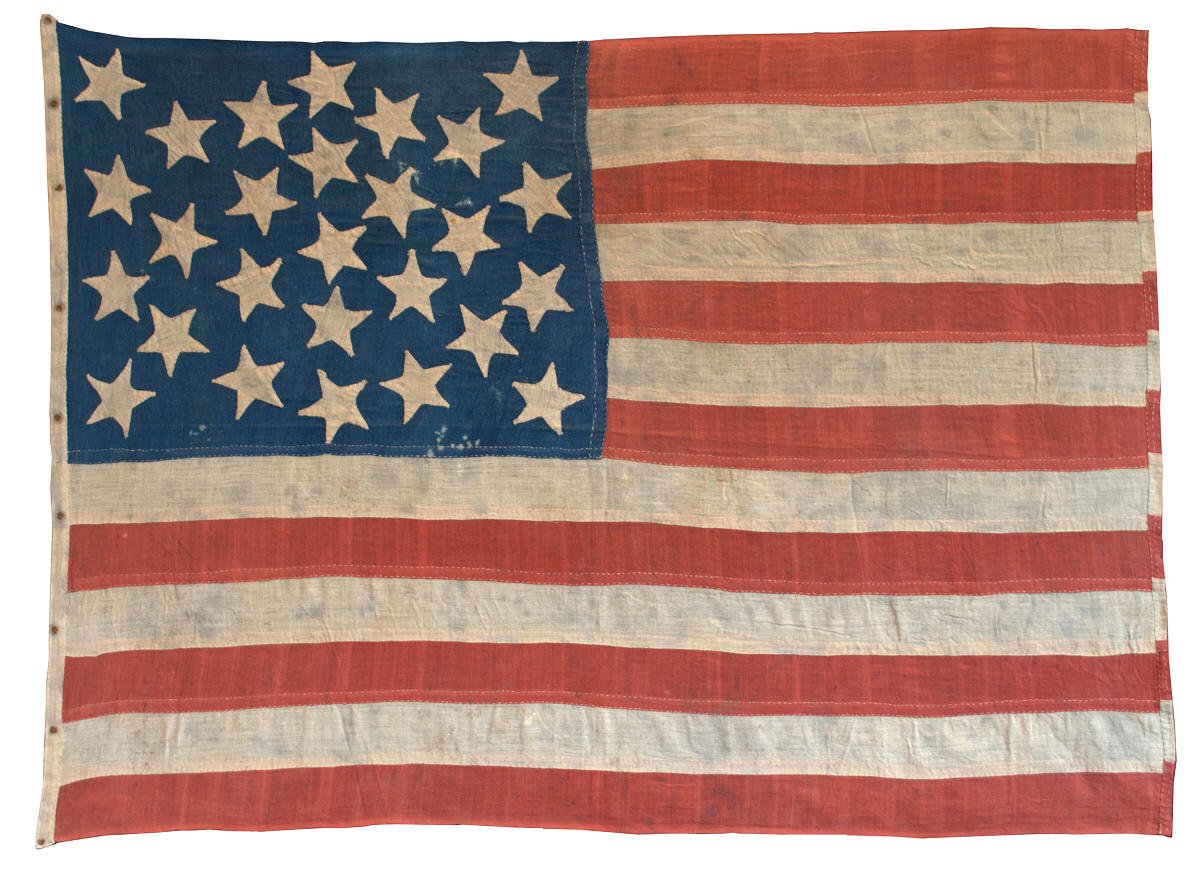|
 Period
flags of 27 stars are very rare. Aside from the
fact that this is a pre-Civil War star count, made
during a period where Americans generally did not
produce homemade flags in great numbers prior to the great
patriotic fervor inspired by the Civil War,
it was only an official star count for one year:
1845-1846. In addition to being a rare star count, the
form of the medallion is very beautiful and, given the
scarcity of 27 star flags, is certainly unique. One can
consider the pattern in several ways, and others who
have seen the flag have offered many interpretations of
the design. One is of an elliptical double
medallion, with four corner stars and one star in the
center. Another is of an ellipse surrounding a
diamond, surrounding a central star. Another is of
a symmetrical pattern of vertical rows:
4-3-4-5-4-3-4. Another could be of a cross of
stars, corner to opposite corner, with four stars above
and below the cross, and three stars to the left and
right of the cross. Regardless of how you consider
the flag, any or all of which are reasonable, the
overall composition is wonderful. Period
flags of 27 stars are very rare. Aside from the
fact that this is a pre-Civil War star count, made
during a period where Americans generally did not
produce homemade flags in great numbers prior to the great
patriotic fervor inspired by the Civil War,
it was only an official star count for one year:
1845-1846. In addition to being a rare star count, the
form of the medallion is very beautiful and, given the
scarcity of 27 star flags, is certainly unique. One can
consider the pattern in several ways, and others who
have seen the flag have offered many interpretations of
the design. One is of an elliptical double
medallion, with four corner stars and one star in the
center. Another is of an ellipse surrounding a
diamond, surrounding a central star. Another is of
a symmetrical pattern of vertical rows:
4-3-4-5-4-3-4. Another could be of a cross of
stars, corner to opposite corner, with four stars above
and below the cross, and three stars to the left and
right of the cross. Regardless of how you consider
the flag, any or all of which are reasonable, the
overall composition is wonderful.
The cotton flag is entirely hand sewn with what appears
to be linen thread. Cotton would have been an
expected material for use in homemade flags of the
period, since it was less expensive than wool bunting
and readily available in general stores and emporiums of
the day. The stars of the flag are
double-appliqué, and, along with the thin hoist, are
made of the same cotton material as the white stripes.
Vertical striations in the vegetable-dyed fabric
indicate that the top four red stripes were cut
together from the same length of fabric, and lower three red stripes were cut together
from the same length of fabric.
The selvedge of the fabric is correctly placed at the
top of the upper red stripe and the bottom of the lower
red stripe, preventing the edges from fraying and
demonstrating that an experienced seamstress produced
the flag. The fly end of the flag is folded and
sewn toward what we consider to be the front of the flag
today, although in that period it was equally acceptable
to display the flag in either direction. The flag
was tacked to a staff at one point, and the square holes
left by square tacks, possibly upholstery tacks, still
hold their square shape when examined closely.
Truly a
beautiful example of a rare and early American flag.
|

